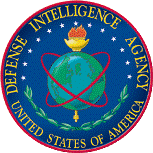United States Department of Defense

United States Department of Defense Military Intelligence
Date of this Version
1946
Document Type
Article
Abstract
During World War II, the Ordnance Department was one of the army technical services. There were a number of technical services including the Chemical Warfare Service, the Army Medical Department, the Corps of Engineers, the Quartermaster Corps, the Signal Corps, and the Transportation Corps. The technical services were bureaus providing weapons, equipment, and services to the Army. They managed the careers of officers in their corresponding branches, and organized special military units. They also ran schools to train individual and military units in their specialties.
During World War II the emphasis of technical intelligence was foreign weapons and equipment. The technical services studied weapons and equipment analogous to the weapons and equipment which each provided for the US armed forces. According to this history the “…Ordnance Department … has the entire responsibility for providing the fighting troops with such items as bombs, rockets, … guided missiles…, proximity fuses... [and more] prosaic ….Ordnance items like machine guns, tanks, trucks, pistols, rifles, antiaircraft… guns…, aircraft armor, [and] artillery, together with all the ammunition and fire control for those."
In one sense, this is a history of the invention of technical intelligence. During the war the importance of studying foreign weapons and equipment became apparent, and procedures were developed for collecting materiel and evaluating it and for disseminating processed intelligence.
The bulk of this section is the account of Ordnance-CIOS cooperation. Because of their technical expertise, Ordnance Department personnel – military and civilian – were to provide much assistance in the CIOS effort to exploit German science and technology. This history describes in detail the organization of the CIOS effort and the sorts of weapons and equipment, industries, and sites that were targeted. It explains the contributions Ordnance personnel made in each area. In July 1945, the CIOS effort was terminated and the American effort continued under the Foreign Intelligence Agency (Technical) (FIAT) with Ordnance assistance. FIAT facilitated travel and accommodated technical experts visiting from the US. Apparently, the history was composed by participants while their work was fresh in their minds.
NOTE: Although German missiles are mentioned, this is not an account of the Ordnance Department effort to collect German missiles and recruit German missile scientists and engineers.
The second tab appears to be muddled notes.
The third tab may have been an interesting speech but the slides are missing.
The forth tab is a brief overview of Ordnance Department technical intelligence efforts during the war.
Glossary
Some useful terms to know are:
Army Service Forces (ASF) was a short-lived military command which included all of the technical services and some other activities. The ASF was headed by a general who reported to the Chief of Staff. It was set up early in the war to limit the number of officials reporting directly to the army Chief of Staff. The ASF was analogous to the Army Air Forces (AAF) and the Army Ground Forces (AGF). In this history, the Ordnance Department is sometimes referred to as the “Ordnance Department, ASF,…”
BIOS stands of the British Intelligence Objectives subcommittee, a successor to CIOS.
CIOS stands for the Combined Intelligence Objectives subcommittee, a joint British-American effort to exploit German science and technology.
FIAT stands for Foreign Intelligence Agency (Technical), a successor to CIOS.
TI stands for technical intelligence.
Included in
Defense and Security Studies Commons, Military and Veterans Studies Commons, Other Engineering Commons, Peace and Conflict Studies Commons, Soviet and Post-Soviet Studies Commons


Comments
(1) This is a digital copy of a typewritten history prepared shortly after World War II. This history is a working document which was apparently not published. Parts of the digital copy are not legible.
(2) The document copied was loaned to Robert Bolin by the US Army Military History Institute.